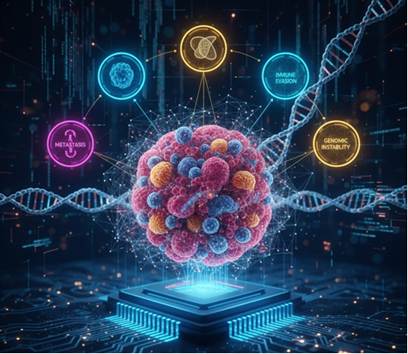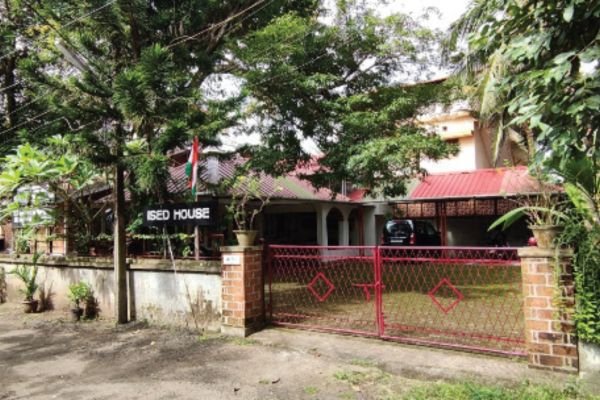In an era of “jobless growth,” the India World of Work Lab (IWWL) by ISED unravels the evolving nature of jobs and work. From digital transformation to flexible work models, IWWL explores how economic growth and technology are reshaping income opportunities. With insights into historical transitions and future trends, the lab serves as a research and advisory hub for policymakers, educators, and businesses navigating this dynamic landscape.
Economic growth and job creation are the two key challenges (as also opportunities) for the Indian economy. With economic growth, a corresponding pace of job creation should ideally take place. But, “jobless growth” or insufficient growth of employment opportunities, is a globally accepted phenomenon today. Why?
Economic growth triggers the ‘world of work’ (involving both human labour and machines), but is not necessarily expected to create “jobs”. A ‘job’ is a specific activity by a person, under a contract with an employer that entitles him/her for an income. The number of such contracts are not increasing on par with the growth of the economy. Why? Because, given the state of technology and organisational innovations today, the same level of output can be achieved without long- term contractual agreements with employees.
“Job” and “work” are conceptually different. A ‘job’ is a specific activity that a person does to earn a living, while ‘work’ is any activity that a person does, whether mental or physical. ‘Work’ is an activity that serves a purpose, while ‘job’ is a form of work that is done for an organisation. Unemployment, in this century, has become rather an abstract concept, against the new ways in which work is organised today.
‘Job’ involves two essential components: a) a human relationship involving an employer and employee; and 2) regularity of work. As the economy grows, the latter obviously happens; but formal jobs are rarer. Even many of the erstwhile jobs get substituted. This is quite natural, as the concept of a ‘job’ is evolutionary, and has changed over time. The industrial revolution, technological advancements, globalization, and changing workforce expectations have all played a role in reshaping the nature of work.
Demystifying the ‘world of work’ to the understanding of the common man demands much professional work today. ‘India World of Work Lab’(IWWL), is a dedicated platform of the Institute of Small Enterprises and Development(ISED), meant for research and advisory services in this largely neglected area. The term “world of work” refers to the historical development of work practices, including the impact of industrial revolutions, the transition from manual labour to machine-driven production, and current trends. The ‘world of work’ is made up of things like jobs, employers, employees, promotions, and pay- checks. Some changes that are happening in the world of work include: digital transformation, remote work, and emphasis on employee well-being and reskilling.
The structure of the ‘world of work’ Is different today. Since jobs are incidental to economic growth, both the regularity of work and employer-employee relationship, as we are familiar with, are no more needed. The concept of “job” is becoming increasingly outdated as more and more people are finding alternative ways to make a living, such as freelance work, remote work, and contract work. Individuals and organizations must embrace lifelong learning, flexibility, and the cultivation of diverse skill sets to thrive in the evolving job landscape.
“ If history is our sign- post, the concept of ‘job’ must be, moving from stability to adaptability”, says the Institute Director P.M.Mathew. Mathew continues his observations in his regular blog, P.M.Mathew speak: “In primitive societies, jobs were closely tied to survival. Early humans engaged in hunting, gathering, and basic agriculture to sustain their communities. As societies developed, specialization emerged, and individuals began to focus on specific tasks. Under the domestic system, skilled labour was the driving force of growth. Under factory system, the next stage, unskilled labour was predominant. The driver of the information age is ‘information’; under the Fourth Industrial Revolution, it is digitally driven automation, or digital process automation (DPA)”.
‘Jobs’ are created by organisations, and therefore, they are visible. ‘Work’, on the other hand, is created by the production system, and therefore, is rather invisible. Hence, the global economy, in its new phase of evolution, offers several unprecedented types and forms of income opportunities, but much less of the ‘jobs’, as we are used to.
The ‘World of Work’ refers to the historical development of work practices, including the transition from manual labor to machine-driven production, the impact of industrial revolutions, and the current trend towards automation and human-computer interaction in the workplace. Article 23 of the Universal Declaration of Human Rights (UDHR) distinguishes between work and job, as it covers a range of rights related to work, including the right to work, the right to choose employment, and the right to fair working conditions. But, the real-world experience of transition in work process is historical. Unemployment, globally, is not only a problem, an opportunity as well. “Taking the bull by the horns”, is the appropriate strategy that history has taught us.
The ‘India World of Work Lab’ is open for research collaboration and advisory services to educational institutions and HR Departments of companies( email: seo@isedonline.org).
Author Profile
Latest entries
 Business18 October 2025Start Your Drone Business: Aquiline Drones Franchise Program for Veterans
Business18 October 2025Start Your Drone Business: Aquiline Drones Franchise Program for Veterans Doing business3 June 2025India’s Q-Commerce Growth Underscores Market-Driven Innovation: Siddharth Shankar
Doing business3 June 2025India’s Q-Commerce Growth Underscores Market-Driven Innovation: Siddharth Shankar Business15 May 2025World MSME Day: A Global Commemoration of Entrepreneurial Vitality
Business15 May 2025World MSME Day: A Global Commemoration of Entrepreneurial VitalityBusiness29 April 2025Russia and UAE Near Historic Free Trade Zone Agreement: A Boost for SMEs













